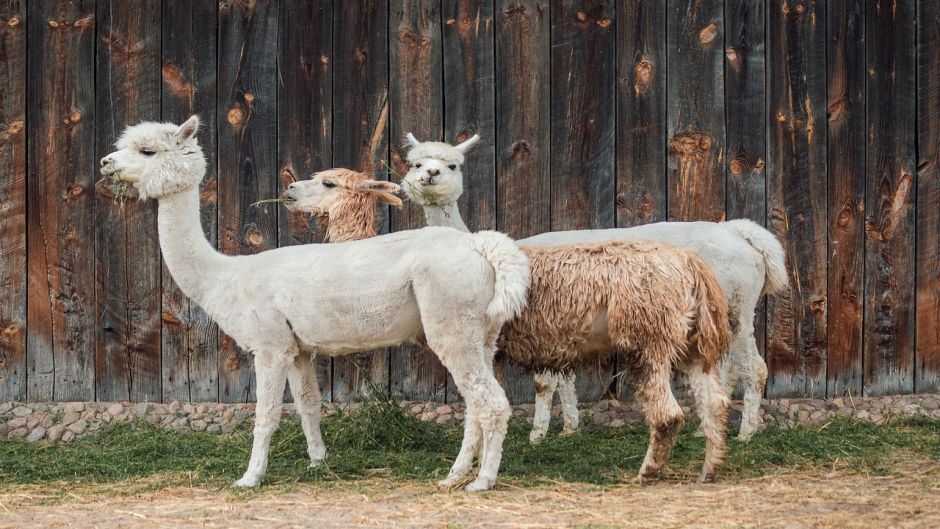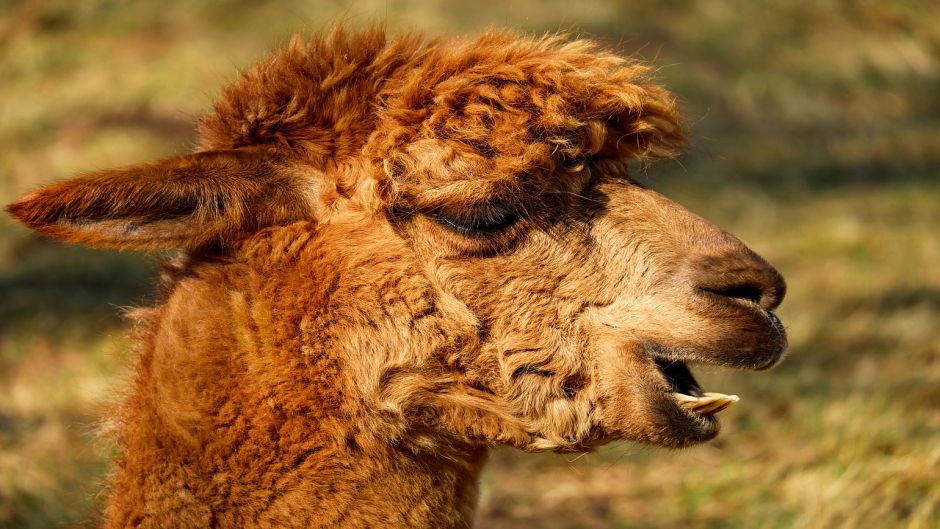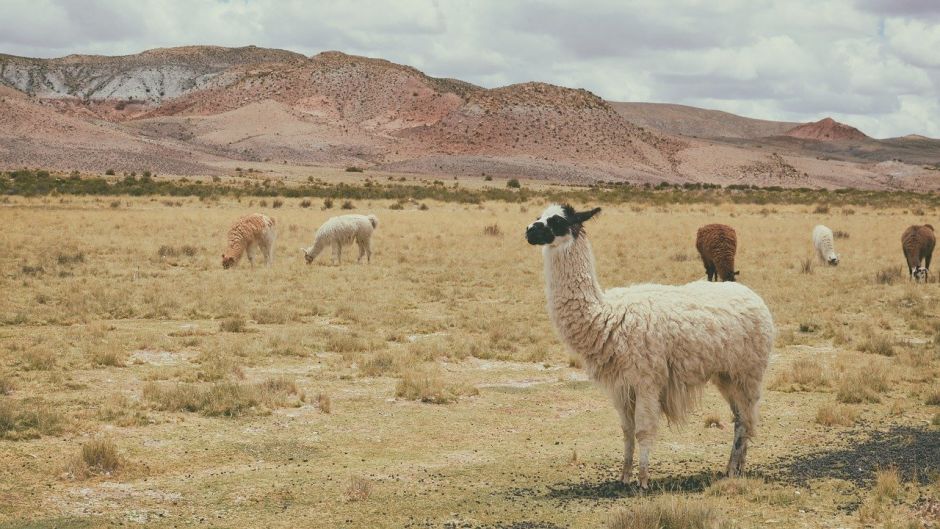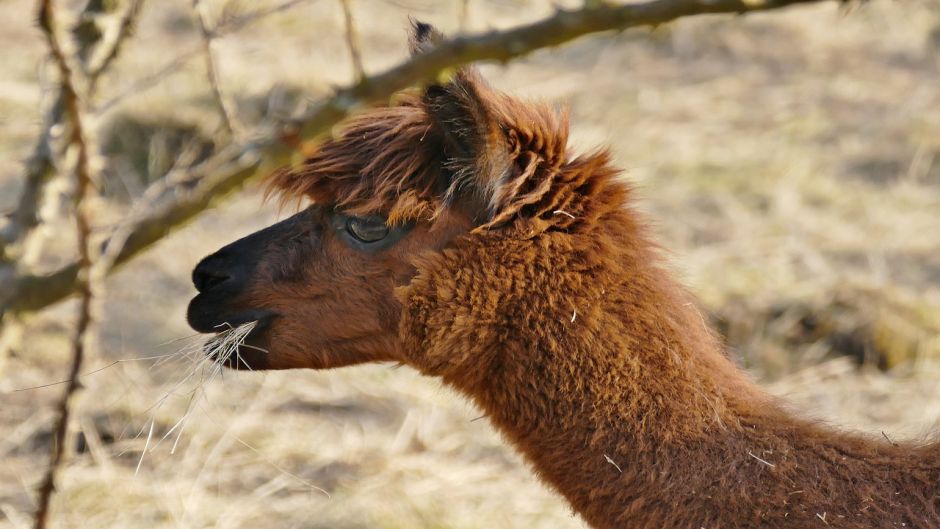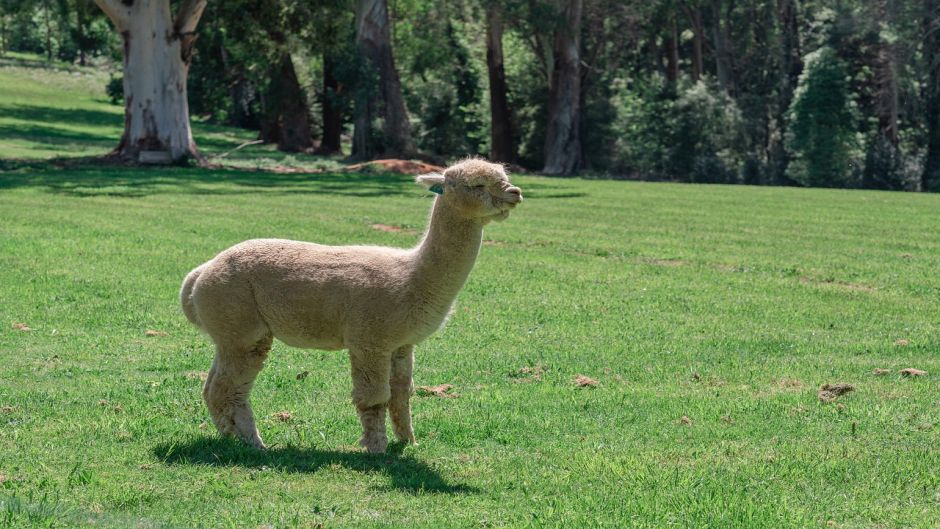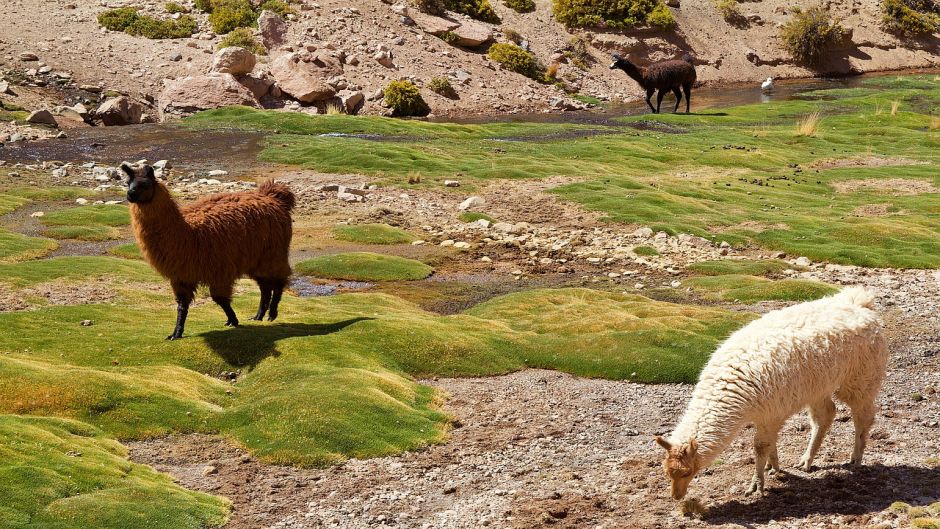Alpaca, Guia de Fauna. RutaChile
Familia:
Camelidae Subfamilia: Eutheria
Genero:
Lama Nombre Cientifico: pacos
It is a domesticated auquénido, it is smaller than the llama, its body is covered with abundant wool. The adult is 1.60 meters tall and weighs 70 to 85 kilograms.
Habitat and Behavior
Its current geographic distribution extends from Ecuador (recent introduction) to Lake Poopo in Bolivia, with a smaller number of animals in northern Chile and Argentina.
The predominant habitat is above 3,500 meters above sea level, it can live up to twenty years. The female can breed for induced estrus, being able to have offspring throughout the year, although it usually stops in the rainy months of December to February. The gestation lasts 11.5 months and the calvings never give twins.
Two races are presented:
The Huacaya, which is characterized by having a fleece similar to that of the Corredale sheep, composed of fine fibers of about 24 microns perpendicular to the body, of good length and presence of undulations;
The Suri, which is characterized by having the fleece like that of Lincoln sheep with finer fibers than the huacaya, grouped in spiraled or curly wicks, which grow parallel to the body.
It is fed, like the vicuña, succulent plants, but unlike this one is more affected towards the herbaceous plants than the grasses.
They only brows when there is extreme need.
The color of the fiber is varied, although more uniform than that of the Flame; it goes from white to black, presenting light brown, dark tones, as well as silver gray, all of them as natural colors.
The resulting fleece can be of single or mixed colors presenting high variability of its fibers in color, average diameter, length, resistance to tension, elasticity, flexibility, etc.
Importance
It is rarely used as a pack animal, being rather bred for fiber and meat production.
It is a mammal adapted to the altitude that supports frost well and has numerous advantages over cattle introduced as sheep and cattle.
For example, its wool is very thin and insulating, milk has more protein than that of the cow and its meat less cholesterol.
The Alpacas are native to the Andean highlands where, for thousands of years, they have been exploited by the peoples who have settled in their valleys and mountains, and there are numerous testimonies of their relationship with man in monuments and museums in the area.
The exploitation of alpacas began in Europe around 1850 at the hands of Sir Titus Salt. Soon an important textile industry began to flourish, based fundamentally on wool imported from Peru.
Alpaca breeding, outside of its natural environment in the Andes, began in the United States in the mid-80s.
Countries where lives Alpaca
ARGENTINA
BOLIVIA
CHILE
ECUADOR
PERU
